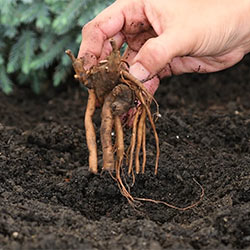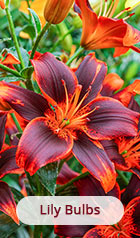Thank You!
We have received your request. You will be notified when this product is in stock.
X
Our pre-planned garden collections and flower garden kits will help you plant your next garden with confidence. All of our pre-planned gardens are professionally designed by our plant experts for the ultimate combination of beauty, ease and value. We've removed the intimidation that even some seasoned gardeners experience when it comes to deciding what to plant where and which plants complement one another by offering easy to use garden kits. We have a variety of popular garden styles available in our pre-planned garden kits, and you should know these products are listed all at special savings compared to buying individual plants. Plus, you'll find layout and planting instructions to download on each product page. Go ahead and take the guesswork out of creating your perfect garden today with a pre-planned garden.
What is a pre-planned garden?
A pre-planned garden is exactly that: a ready-to-grow garden with the planning already provided! Many gardeners, even those with years of experience, find mixing and matching garden plants to be an intimidating chore, with lots of bloom times and growing requirements to check. Our pre-planned gardens remove that hassle.
For each of Michigan Bulb's pre-planned garden kits, our horticultural experts have grouped plants that share needs or traits. Our set of drought-tolerant plants has been a hit season after season, and our shade groupings are similarly popular. Our experts have created the perfect cast of perennials or bulbs to perform in your garden.
How to properly lay out your pre-planned garden:
Ordering a pre-planned garden takes the decision-making out of selection and leaves you to the fun part: laying out and planting your garden! Choose your planting area, whether a pre-existing bed or a newly-dug garden. Consider the sun requirements of your pre-planned garden, most planned gardens are intended for either mostly sun or mostly shade. Make sure to choose a well-draining area, as most plants don't thrive in constantly-wet conditions. Then measure the space, making sure it meets the size recommended in the planting instructions or diagram.
You'll need to check the planting instructions for your individual varieties: spacing guidelines will allow you to prepare for your plants' mature widths. Check the mature heights of your plants, too. In most flower beds, it makes sense to place taller plants toward the back of the bed, to allow shorter varieties to shine.
Many of our pre-planned kits come with a planting layout for your garden. You may also sketch your own layout if you prefer, or use an online landscaping design program to plan it. Some gardeners even create their plans on the plot of ground itself, using markers or tags to represent plants. Your plants may appear spaced far apart this year, but they'll fill in within a couple of growing seasons. Using a tape measure, space your perennials or bulbs before setting them in the ground.
How to prepare your garden and soil for a pre-planned garden kit:
Whether your pre-planned garden kit will be a new garden or the revamping of a beloved garden bed, the key to preparation is aeration! You need to be sure to break up compacted soil to allow roots to grow and keep water from pooling around your new collection of plants.
If you're starting a brand new garden, you'll need to break up a deep layer of soil in the ground where you plan to plant your garden. Begin by clearing out rocks and debris, and removing any grass or weeds from the top of the soil. Weed removal for a new garden can be a hefty task: make it easier by ensuring the ground is warmed. If the weather is still cold, place plastic sheeting over the area a few hours before digging, in order to warm the soil and loosen the roots of the weeds. Now, using a hoe, you can break up the lop layer of soil and remove those weeds.
Next, you'll need to make sure the soil is appropriate for your garden plants. You may need to amend your soil to make it healthier. Pay attention to the soil as you loosen it. If your soil is particularly clay heavy--if it doesn't crumble easily, and is heavy and sticky--amend it with a sandier, better-draining substance. If your soil is very sandy, you may need to add mulch or compost to insert more nutrients.
Is your soil the right pH for your plants? Soil pH--acidity or alkalinity--affects the nutrients in your soil, and they way that plants receive those nutrients through their roots. Although this is typically a bigger issue in vegetable gardening than in planting a flowering garden,a very high or very low soil pH can lead to poor plant growth. If you are concerned that your soil is either highly acidic or alkaline, check with your local department of agriculture for the proper amendment to improve it.
If you're unsure about your soil, you can always add commercially-available soil from a garden center or hardware store for the first year. As your garden grows, you'll see richer, better soil year after year.
How to plant a flower garden kit:
Planting a pre-planned flower garden kit is a fun way to get started in gardening: with the perennial and bulb selections made, you'll need only to provide a patch of land with the right amount of sun. With perennial or bulb garden kits, there's no seed-starting or need for special lighting. These plants can be planted directly into the garden, following the printed instructions for each variety. And, we'll ship them when they're ready to plant!






















